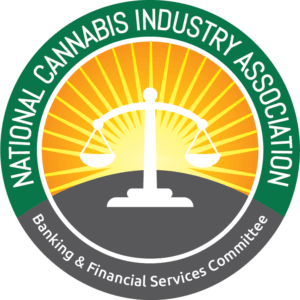 By Deborah Johnson, MCA Accounting Solutions & James Whatmore, MAB Investments
By Deborah Johnson, MCA Accounting Solutions & James Whatmore, MAB Investments
NCIA’s Banking & Financial Services Committee
Part 3 of a 3-part series
In our first two blogs we took you from early concept, legal formation and early efforts through the early angel rounds. You have production in place with some equipment financing, getting you to early-stage revenues. Hopefully a smart angel investor is available to you for questions or direction. In the final part of this blog on funding your business, we will present some formal round structures, how you can best prepare for those finance rounds, and some ways to bring your friends along for the ride.
Everything you have done to date is going to be considered in a Series A round. What you have done and who you have surrounded yourself with will be looked at by potential investors. You have put in the work and built strong social capital. You have a diverse and strong team with expertise in your sector. The next level of investor will want to see how you tie it all together. These factors will be considered in light of your Total Addressable Market (TAM), valuation, use of funds, jurisdiction, and many other metrics. At this level a solid accounting team can produce Canna-GAAP (Generally Accepted Accounting Principles) financials to build a credible financial model. Having this current as you move through funding will give investors some level of comfort. As we have discussed, preparation is particularly important.
Alain Bankier, an active Angel investor, points out, “If you have brought on the right group of Angel investors, they are a prime source of excellent feedback, as you prepare your deck, your financials, and your pitch for the next round. Angel investors have seen 100’s if not 1000’s of company pitches and they can help you craft the most compelling presentation and they are your natural allies, as they have already invested and are motivated for you and the company to succeed!”
Long-term planning will help you define the total amount of funding you will need for certain milestones of development. A series of capital raises has some advantages over a single funding event. Each milestone you pass signals a value add to the company, and each subsequent round will be less dilutive. And the investor may see the project as de-risked, increasing their commitment through the follow-on rounds.
For each round there are several types of funding instruments: SAFE agreements, convertible debt, and preferred equity to name a few. Simple Agreement for Future Equity (SAFE) may be an option early in the funding plan. A SAFE note is a convertible security that allows the investor to buy shares at a future priced round. It has no maturity date and no interest rate. As such they are not debt and therefore do not accrue interest. But it also requires C-Corp status as the note goes on the cap table just like stock options. A convertible note is a common way to kick off a formal funding cycle and is dependent on future rounds as a trigger event. As a note it has a term of maturity and an interest rate; often there will be a cap on conversion value and a discount on valuation below that threshold. Once triggered, both of these may convert into shares of the company (or units of an LLC); what those shares are is described in the offering documents, usually summarized in a term sheet outline. These shares can have any number of rights or preferences attached to them. The fact that these are triggered by further rounds makes them a good part of an overall funding strategy.
The alphabet soup of rounds starts after the convertible note. The first equity A round will essentially sell some of the company to your investor; there will be a price, your valuation, and terms. As long as you are executing on the vision you have communicated to investors, each additional round will reflect your progress with a higher valuation and less attractive rights. The business put forth by you and your PowerPoint pals from the first blog in the series was worth a couple thousand dollars. Now you can apply many metrics on your sales, balance sheet, or milestone for a multimillion-dollar value.
Convertible debt and equity rounds are part of your long-term funding plan; so are new target investors. As you hit milestones and rise in valuation, the company becomes attractive to new investor classes. Certain funds have a minimum milestone they need to see before considering an investment. Pre-revenue, post-revenue, cash flow positive, market share, and total sales all have relevant hurdles for certain groups. Seed and angel investors may participate in a convertible note getting you to revenues, while an investment fund will only lead the A round with those revenues in place. If all is right, they will participate in B and C rounds as well; with larger and more sophisticated investors looking at the milestones you are currently achieving. The investors who value your milestone wins will take notice and start to circle.
As the investment in your company grows, the pool of investors shrinks. Although this may change in the near future, the traditional investment landscape is limited in cannabis; fortunately, there are several new and non-traditional sources of funding. Crowdfunding is a trend that has not escaped cannabis; however, the stigma has limited the platforms those in the industry have access to. Crowdfunding via Reg CF is the use of small amounts of capital from a large number of individuals. It is legal to be part of a cannabis business by investing up to $2,000 in exchange for ownership of a portion of the company. Through this method, a company can raise up to $5 million. Sites such as Fundanna, CannaFundr, Start Engine, Kickstarter, Crunchbase, Mazakali, Useed, Indiegogo, and SeedInvest provide platforms to market opportunities. There are various hurdles encountered here as well. Platforms can have banking issues as well. For example, 420fundme was shut down after their bank decided not to work with them. Also, some require the business to be in a U.S. state where cannabis is legal, or they only promote those businesses that impress them. So be sure to understand the sites’ rules and stay on top of regulations.
The REG A(+) is crowdfunding’s big sibling. This is an investment vehicle that is exempt from registration with the SEC that allows the general public and not just accredited investors to join the round up to $50 million in a 12-month period. GAGE, a Michigan vertical, successfully funded their recent expansion with a Reg-A. If you are talking to investment banking firms, this could be a good late-stage option to secure a large round of capital.
As you prepare to fundraise and have a clear understanding of where your business is in its lifecycle, you can put together the best capital raise for your project. Cannabis is a relatively new industry, and its murky legality means that roadblocks are likely. Be prepared to exercise all of your financing options. When raising funds for equity, all of the investors are looking for a liquidity event. So, whether your company eventually goes public or there is a merger or acquisition, they are not looking to invest in a so-called “lifestyle” company. As legality is resolved, many companies that are now on the sidelines looking in will be looking for opportunities to acquire and appear “established”. This is your window of opportunity to build a great brand, gain traction and be ready for when that happens.


Follow NCIA
Newsletter
Facebook
Twitter
LinkedIn
Instagram
–